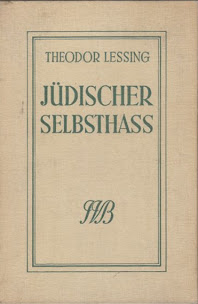Antisemitism is hostility to, prejudice towards, or discrimination against Jews. A person who holds such positions is called an antisemite. Antisemitism is considered to be a form of racism.
Antisemitism in Christianity is the feeling of hostility which some Christian Churches, Christian groups, and ordinary Christians have towards the Jewish religion and the Jewish people.
The history of antisemitism, defined as hostile actions or discrimination against Jews as a religious or ethnic group, goes back many centuries, with antisemitism being called "the longest hatred". Jerome Chanes identifies six stages in the historical development of antisemitism:
- Pre-Christian anti-Judaism in Ancient Greece and Rome which was primarily ethnic in nature
- Christian antisemitism in antiquity and the Middle Ages which was religious in nature and has extended into modern times
- Muslim antisemitism which was—at least in its classical form—nuanced, in that Jews were a protected class
- Political, social and economic antisemitism during the Enlightenment and post-Enlightenment Europe which laid the groundwork for racial antisemitism
- Racial antisemitism that arose in the 19th century and culminated in Nazism
- Contemporary antisemitism which has been labeled by some as the new antisemitism
Religious antisemitism is aversion to or discrimination against Jews as a whole, based on religious doctrines of supersession that expect or demand the disappearance of Judaism and the conversion of Jews, and which figure their political enemies in Jewish terms. This often has led to false claims against Judaism and religious antisemitic canards. It is sometimes called theological antisemitism.
After the fall of Communism in Poland in 1989, Jewish cultural, social, and religious life has experienced a revival. Many historical issues related to the Holocaust and the period of Soviet domination (1945–1989) in the country – suppressed by Communist censorship – have been reevaluated and publicly discussed leading to better understanding and visible improvement in Polish-Jewish relations. In 1990, there were 3,800 Jews in Poland, 0.01% of Poland’s population, compared to 3,250,000 before 1939. The number had dropped to 3,200 in 2010.

Self-hating Jew or self-loathing Jew, both associated with auto-antisemitism, is a term which is used to describe Jewish individuals who hold antisemitic views. The concept gained widespread currency after Theodor Lessing's 1930 book Der jüdische Selbsthaß, which sought to explain a perceived inclination among Jewish intellectuals, toward inciting antisemitism, by stating their views about Judaism. The term is said to have become "something of a key term of opprobrium in and beyond Cold War-era debates about Zionism".
Antisemitism in Japan has developed over the years despite the presence of a relatively small and obscure Jewish population. Japan had no traditional antisemitism until nationalist ideology and propaganda began to spread on the eve of World War II. Before and during the war, Japan's ally National Socialist Germany encouraged Japan to adopt antisemitic policies. In the post-war period, extremist groups and ideologues have promoted conspiracy theories, but antisemitism has not become a widespread phenomenon in Japan.

Racial antisemitism is prejudice against Jews based on a belief or assertion that Jews constitute a distinct race that has inherent traits or characteristics that appear in some way abhorrent or inherently inferior or otherwise different from the traits or characteristics of the rest of a society. The abhorrence may find expression in the form of discrimination, stereotypes or caricatures. Racial antisemitism may present Jews, as a group, as a threat in some way to the values or safety of a society. Racial antisemitism can seem deeper-rooted than religious antisemitism, because for religious antisemites conversion of Jews remains an option and once converted the "Jew" is gone. In the context of racial antisemitism Jews cannot get rid of their Jewishness.

Edward H. Flannery was an American priest in the Roman Catholic Diocese of Providence, and the author of The Anguish of the Jews: Twenty-Three Centuries of Antisemitism, first published in 1965.
Antisemitic canards are "sensational reports, misrepresentations, or fabrications" that are defamatory towards Judaism as a religion or defamatory towards Jews as an ethnic or religious group. Since the Middle Ages, they have formed parts of broader antisemitic conspiracy theories.

The first sizable Jewish presence in Korea was during the Korean War, when hundreds of Jewish soldiers participated in the American-led effort to repel a communist attempt to control the whole Korean Peninsula. Among the participants was Chaim Potok, who served as a chaplain. His experiences in Korea led to the book, The Book of Lights and I am the Clay.
Antisemitism —prejudice, hatred of, or discrimination against Jews has experienced a long history of expression since the days of ancient civilizations, with most of it having originated in the Christian and pre-Christian civilizations of Europe.

Antisemitism in the United States has existed for centuries. In the United States, most Jewish community relations agencies distinguish between antisemitism, which is measured in terms of attitudes and behaviors; and the security and status of American Jews, which are measured by specific incidents. FBI data shows that Jews were the most likely group to be targeted for religiously-motivated hate crimes in every year since 1991, the Anti-Defamation League said in 2019. Evidence suggests the true number of hate crimes against Jews is underreported, as is the case for many targeted groups.
The following outline is provided as an overview of and topical guide to Judaism:

Criticism of the Israeli government, often referred to simply as criticism of Israel, is an ongoing subject of journalistic and scholarly commentary and research within the scope of international relations theory, expressed in terms of political science. Within the scope of global aspirations for a community of nations, Israel has faced international criticism since its declaration of independence in 1948 relating to a variety of topics, both historical and contemporary.
Since World War II, antisemitic prejudice in Italy has seldom taken on aggressive forms.
Antisemitism in contemporary Hungary remains a controversial topic. One of its milestones was the 1882-3 Tiszaeszlár Affair, a blood libel. In the twentieth century antisemitism significantly intensified after the Béla Kun led short lived Spring 1919 bolshevik dictatorship and its brutal Red Terror followed by the White Terror. The hatred of Jews became operationalized in the interwar period, especially the late 1930s. There were massive deportations during World War II.

Antisemitism in Spain has its roots in Christian anti-Judaism which began with the expansion of Christianity on the Iberian Peninsula during the rule of the Roman Empire. Its first violent manifestation occurred in the brutal persecution of Jews in Visigothic Hispania. During the Middle Ages, Jews in Islamic-occupied Spain, Al-Andalus, were designated as dhimmis, and, despite occasional violent outbursts such as the 1066 Granada massacre, they were granted protection to profess their religion in exchange of abiding to certain conditions that limited their rights in relation to Muslims. After the Almoravid invasion in the 11th century, the situation of the Jewish population in Muslim territory worsened, and during the Almohad invasion of the peninsula, many Jews fled to the northern Christian kingdoms, the eastern Mediterranean and the more tolerant Muslim areas in North Africa.
The Khazar hypothesis of Ashkenazi ancestry, often called the Khazar myth by its critics, is a largely abandoned historical hypothesis. The hypothesis postulated that Ashkenazi Jews were primarily, or to a large extent, descended from Khazars, a multi-ethnic conglomerate of mostly Turkic peoples who formed a semi-nomadic khanate in and around the northern and central Caucasus and the Pontic–Caspian steppe. The hypothesis also postulated that after collapse of the Khazar empire, the Khazars fled to Eastern Europe and made up a large part of the Jews there. The hypothesis draws on some medieval sources such as the Khazar Correspondence, according to which at some point in the 8th–9th centuries, a small number of Khazars were said by Judah Halevi and Abraham ibn Daud to have converted to Rabbinic Judaism. The scope of the conversion within the Khazar Khanate remains uncertain, but the evidence used to tie the Ashkenazi communities to the Khazars is meager and subject to conflicting interpretations.
Alan T. Levenson holds the Schusterman/Josey Chair in Judaic History and is the Director of the Schusterman Center for Judaic and Israel Studies at the University of Oklahoma. Levenson has written extensively on the modern Jewish experience for both scholarly and popular audiences. His book, Between Philosemitism and Antisemitism: Defenses of Jews and Judaism in Germany, 1871-1932 was nominated for a National Jewish Book Award Prize, and his textbook, Modern Jewish Thinkers, is widely used in classes on Jewish thought. He has won a number of prestigious fellowships, including an ACLS, and has lectured in the United States, Israel and Germany. He has recently completed two major projects: The Making of the Modern Jewish Bible (2011), a history of Bible translations/commentaries in the modern era; and, as General Editor, The Wiley-Blackwell History of Jews and Judaism (2012). He received his BA/MA from Brown University magna cum laude, and his Ph.D. from Ohio State University. He is currently at work on a book about Genesis 37-50 from the Bible until today, tentatively titled "Joseph: A Portrait Through the Ages". As author, he is largely held in libraries worldwide.








